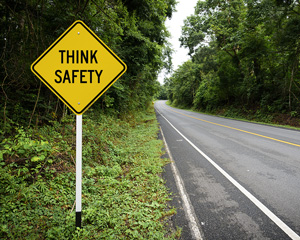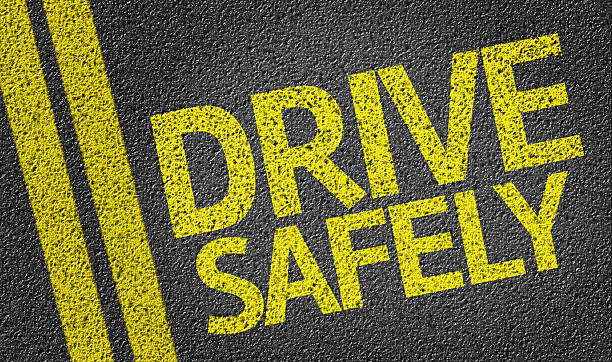
Safety News
Roadway Safety
Sharing the roads safely
There are many factors that contribute to our safety and the safety of others on the road. Being aware of our surroundings and understanding how to share the roads safely with others improves your chance of avoiding potentially deadly situations.
Work Zones
Highway work zone sites can be a challenge to drivers. Navigate with courtesy and caution. There are many things to consider when driving in work zones:
• Workers and construction activities may encroach into driving lanes
• Most states have move over laws for emergency and hazard vehicles – you must move over or slow down and give them space
• Hazards may be present even when no construction activity is underway; look for large edge drop-offs, rough pavement, sharp turns and misleading old pavement markings
• Construction vehicles will enter and leave construction zones at low speeds and unexpected places
The Blind Spot of Larger Vehicles
Blind spots are areas all around a truck where collisions with other vehicles are more likely to occur because the truck cannot see your vehicle.
• When following a tractor-trailer, develop the habit of following at a distance that allows you to see both of the outside mirrors – if you cannot see both outside mirrors, the driver cannot see you either
• When passing a larger vehicle, do not cut back in without first being able to see the front tires of the truck on the pavement in your inside rearview mirror
• Larger vehicles need more room to make turns – if the vehicle is signaling a right turn, stay behind it, away from the curbside, until the turn is completed
• The larger the vehicle and the higher the speed, the longer it takes for it to stop
School Buses
School buses mean children are or may be nearby. Here are the safest actions to take when approaching a school bus:
• Reduce your speed
• Expect children to appear out of nowhere
• Cover the brake
• Remember, if the amber lights on the bus are flashing, the bus is about to stop
• Stop if the red lights are flashing and the stop arm is extended, the bus is stopped or stopping
• Do not pass a school bus with flashing red lights or an extended stop arm
Since state laws may vary on which vehicles must stop for stopped school buses on divided roadways, check with your state and local governments for the enforceable statute in your area.
Bicyclists
Bike riding is more than a hobby. For some people, it is their only mode of transportation. Generally, bicyclists are prohibited from using freeways and interstate highways. Yet on all big or small roads, bikes are allowed and cyclists have a right to use the road as dictated by state and local regulations. Share the roads safely with bicyclists:
• Be considerate – Bicyclists usually have the same rights and responsibilities as any motor vehicle
• Be generous – Share the space and give cyclists trailing room
• Be patient – Give them their space and pass with care
• Be aware – Use the far hand reach when exiting a parked vehicle
Motorcyclists
The appearance of a motorcycle in a traffic situation when the motorist is not prepared can lead to a hazardous situation. Motorcycle collisions may occur when the driver either does not see the motorcycle or does not see the motorcycle until it’s too late. Motorcyclists are not difficult to see if the motorist is prepared:
• Drive defensively by constantly scanning the roadway for hazards
• Cooperate with motorcyclists on the road
• Use courtesy and obey the law when interacting with motorcyclists
• Use the “what-if” strategy when driving near motorcyclists
• Use a safe following distance when behind a motorcycle
As drivers, we are responsible for our roadway community by learning and making a commitment to drive safely and defensively to reduce traffic collisions and violations.

